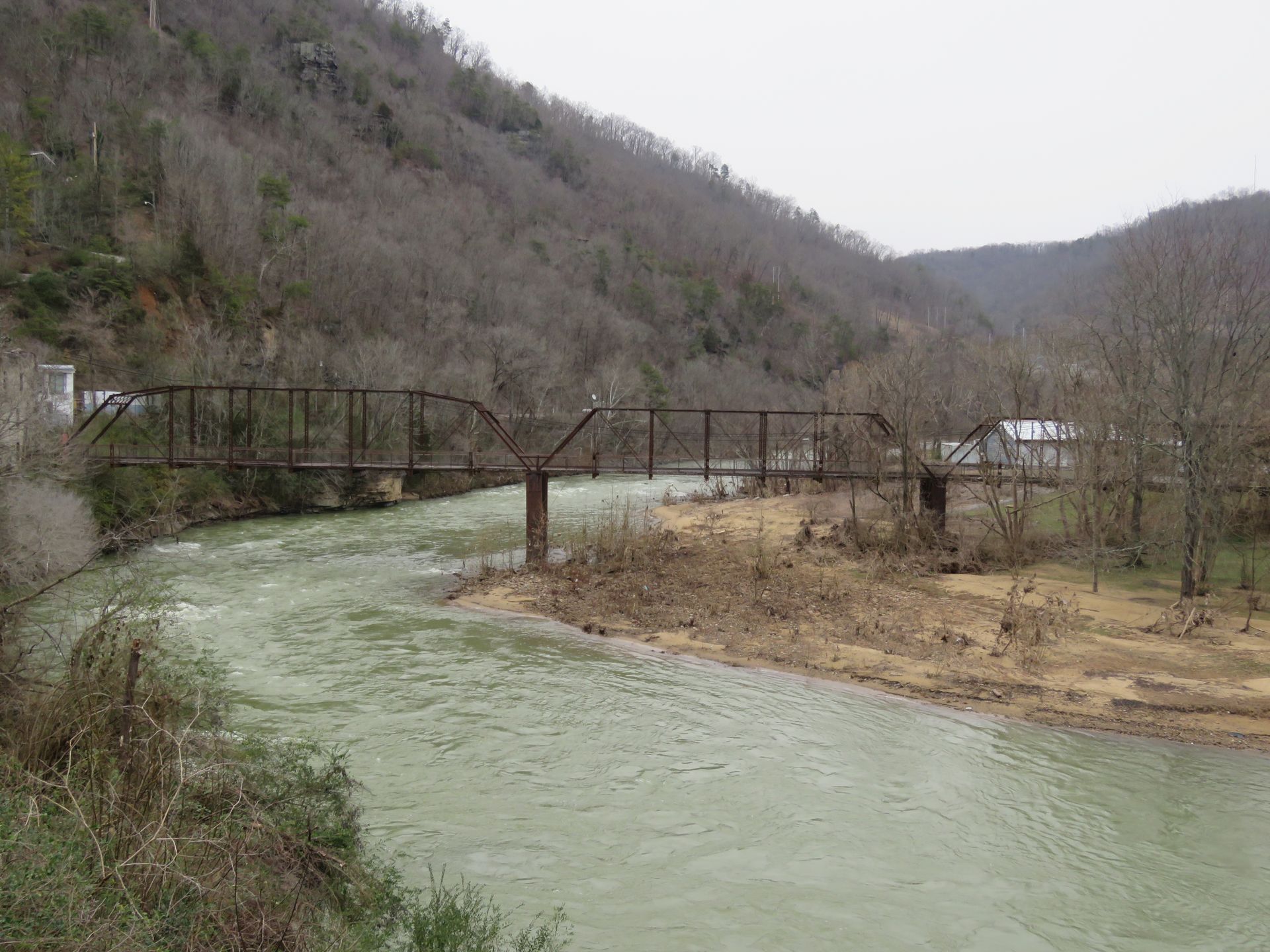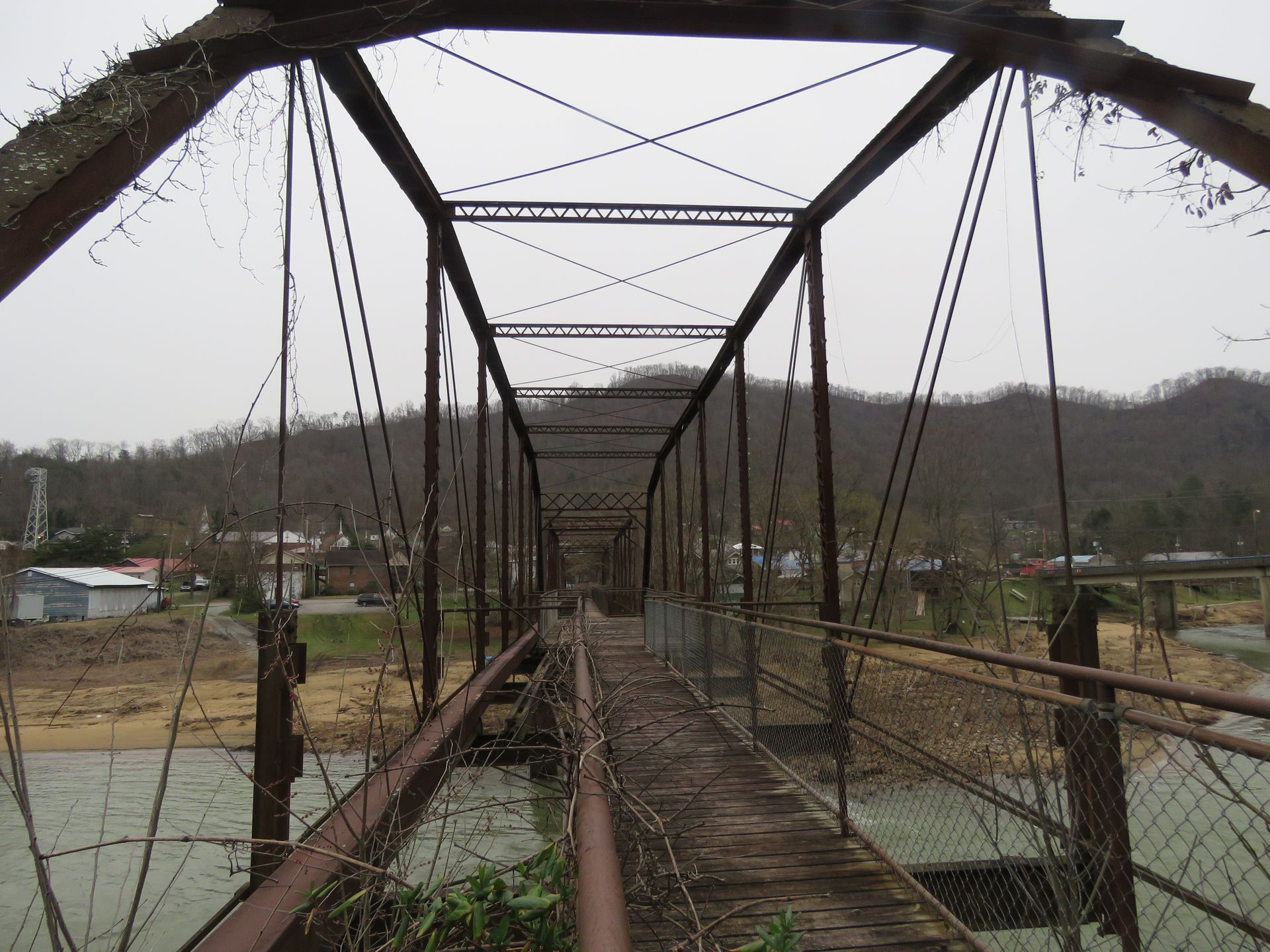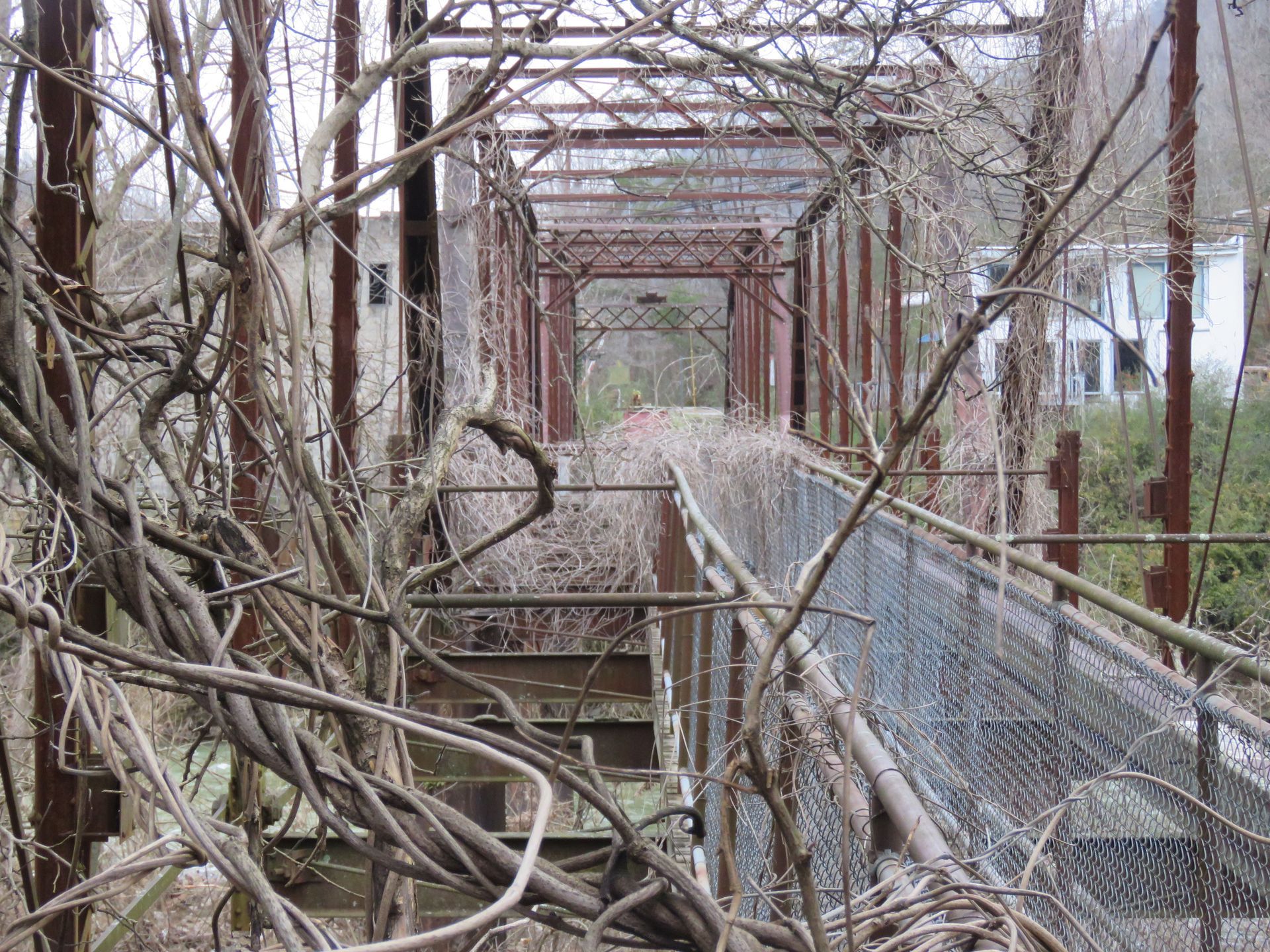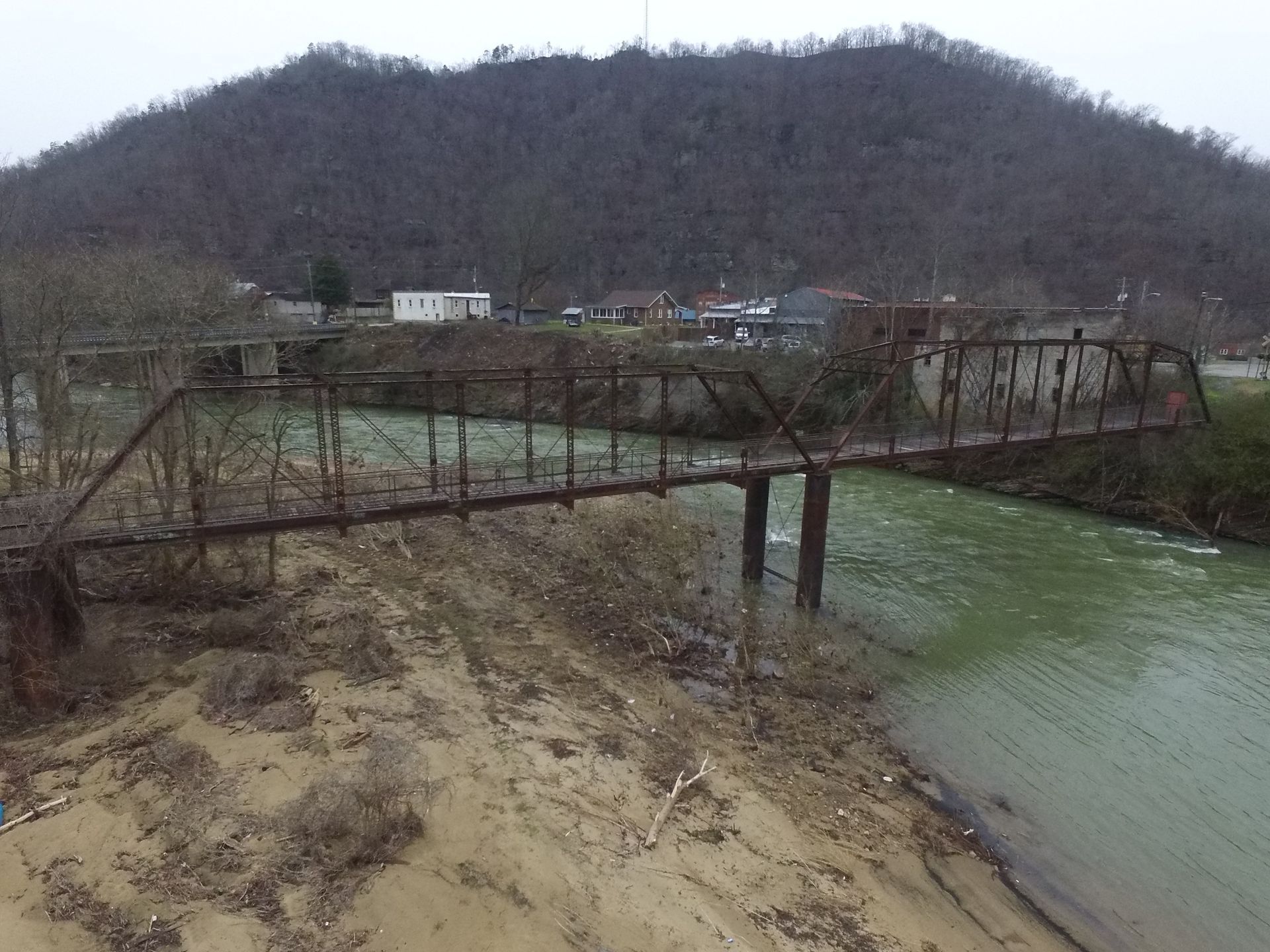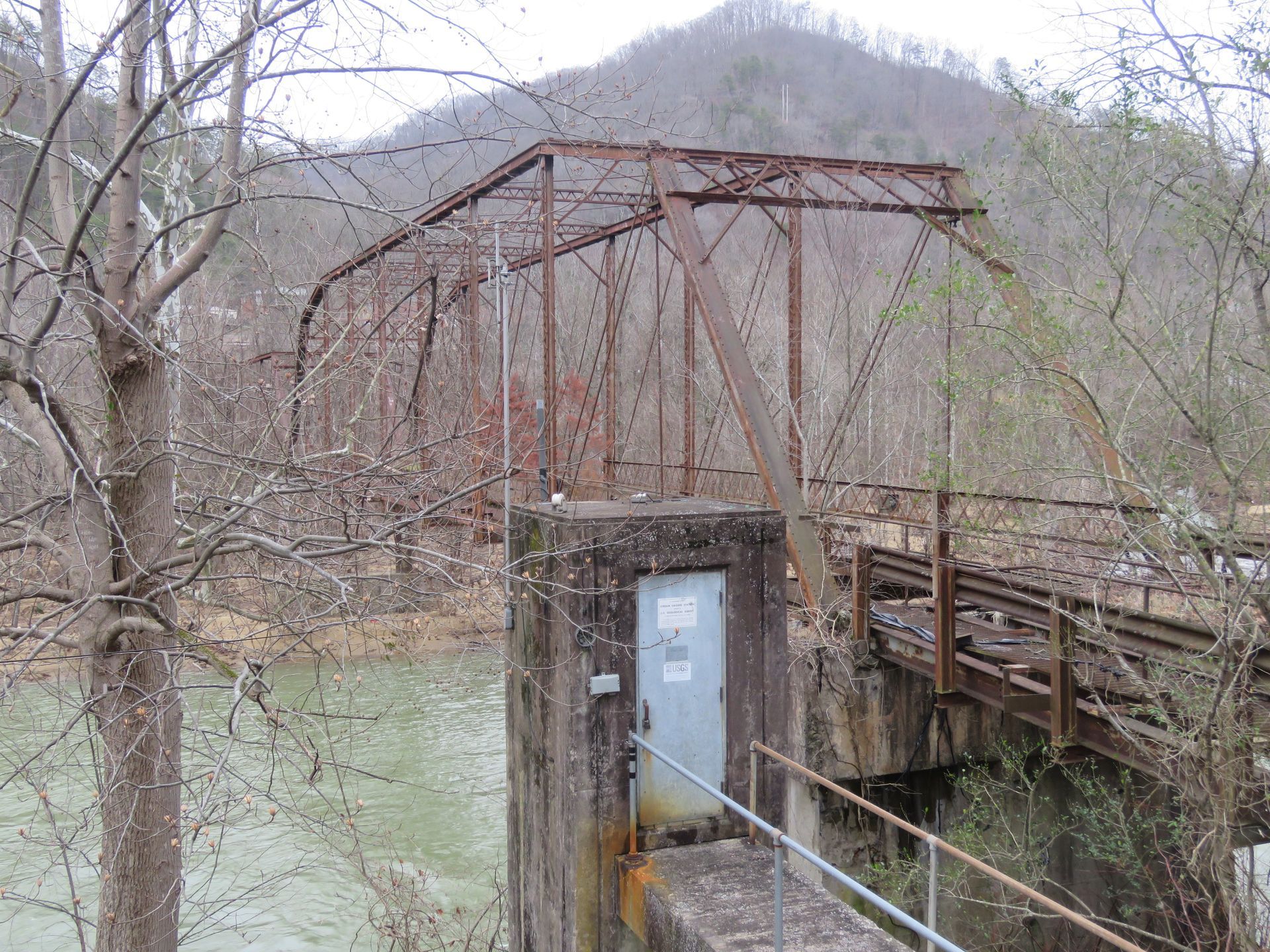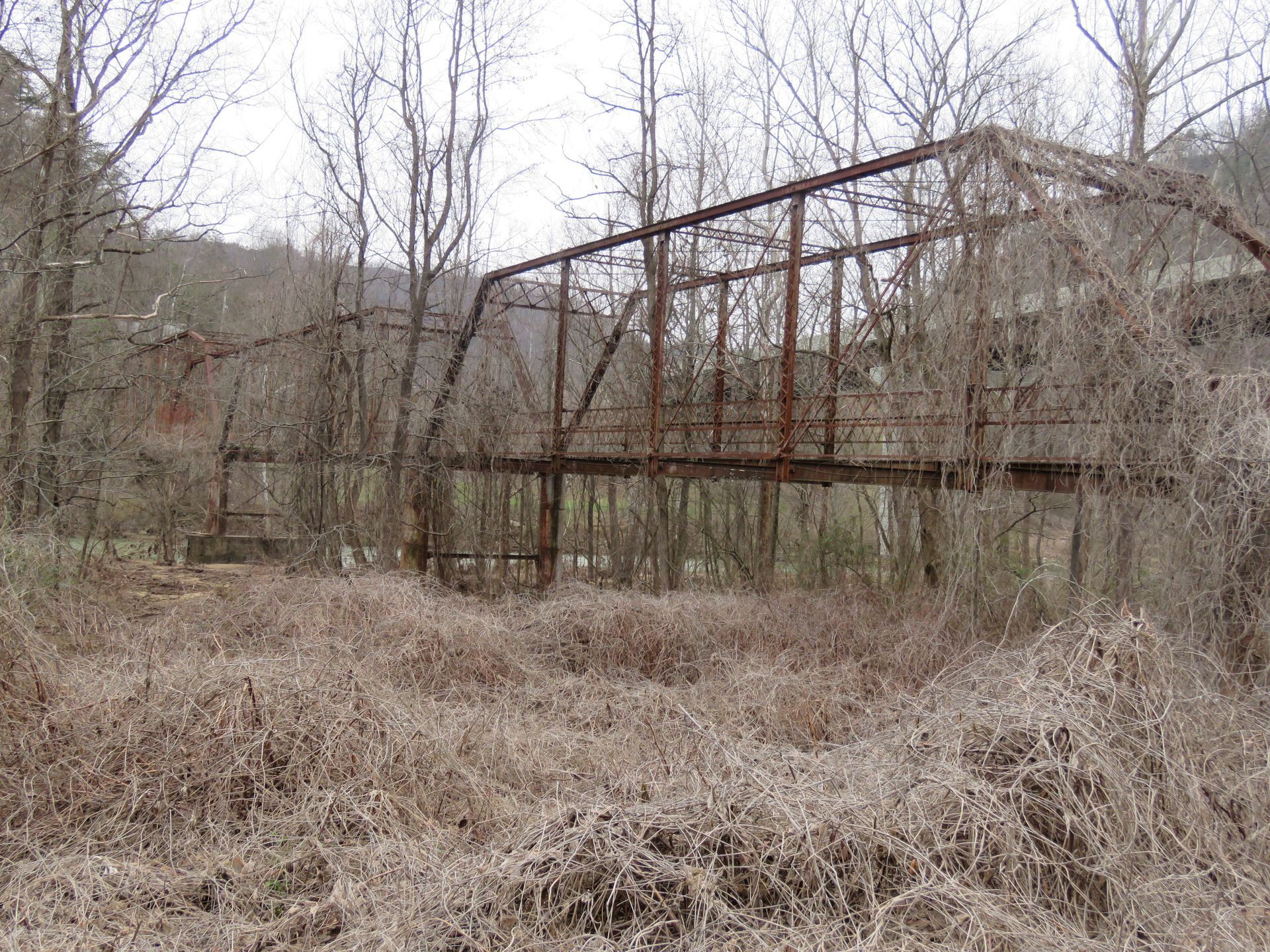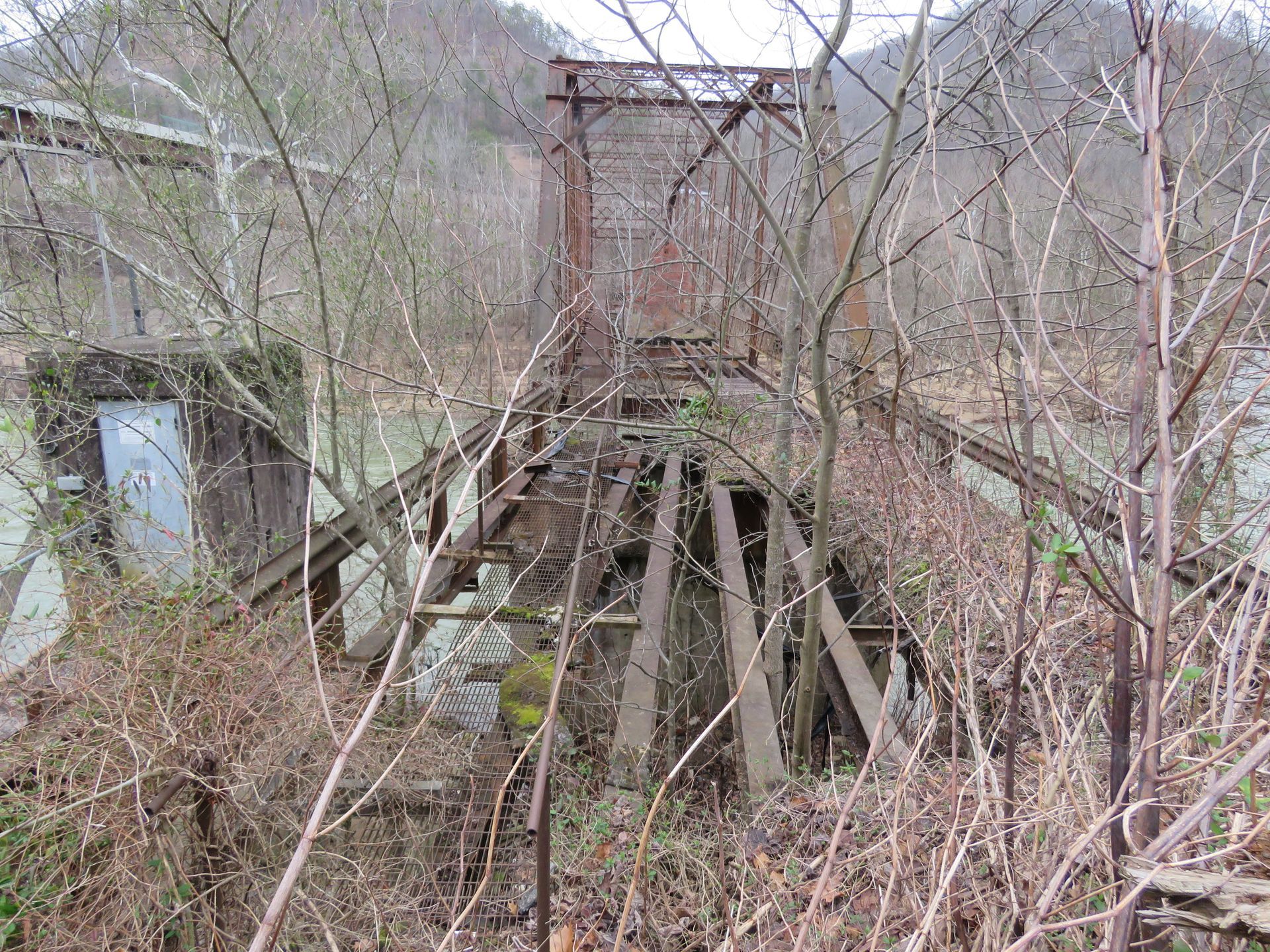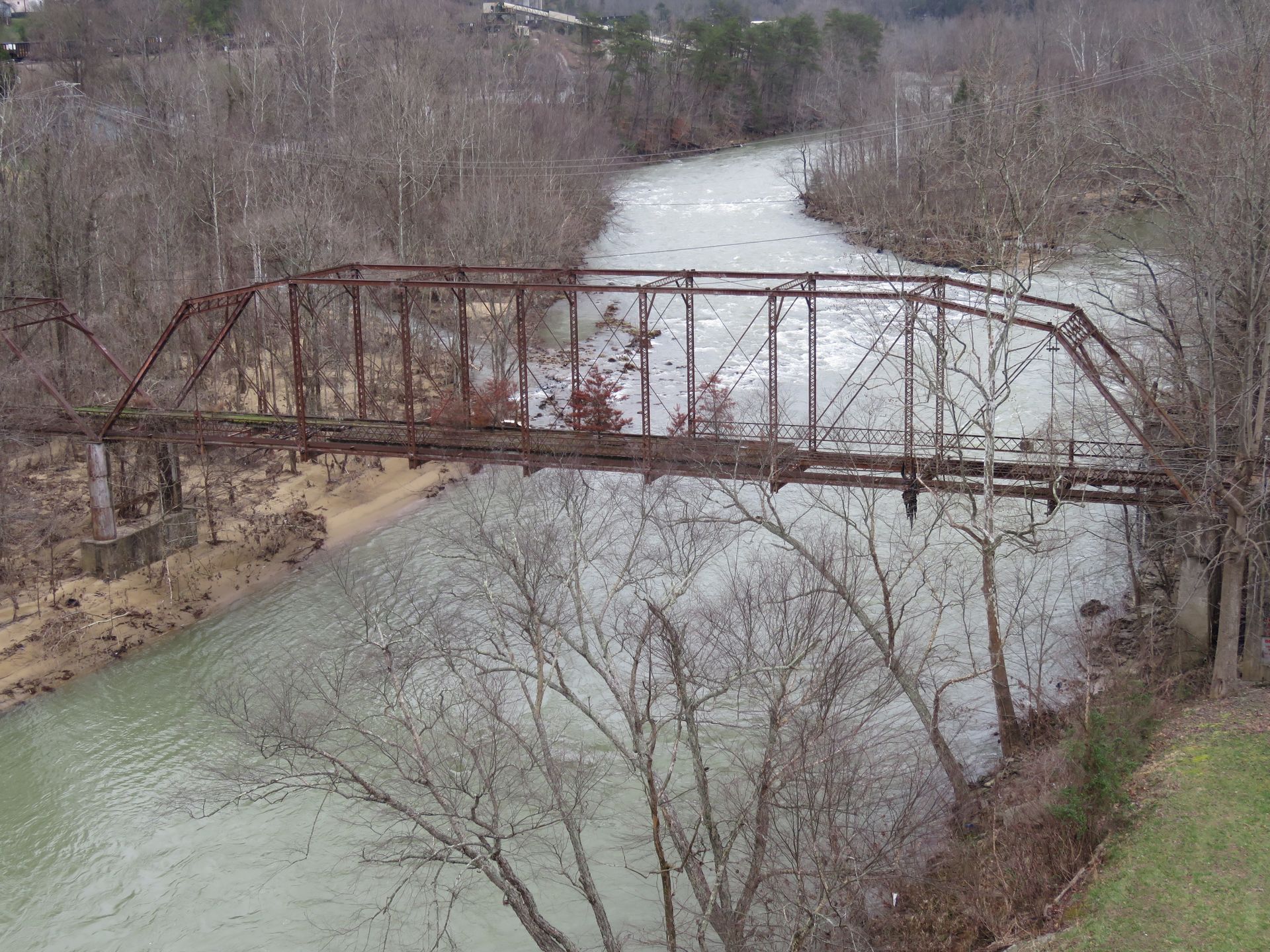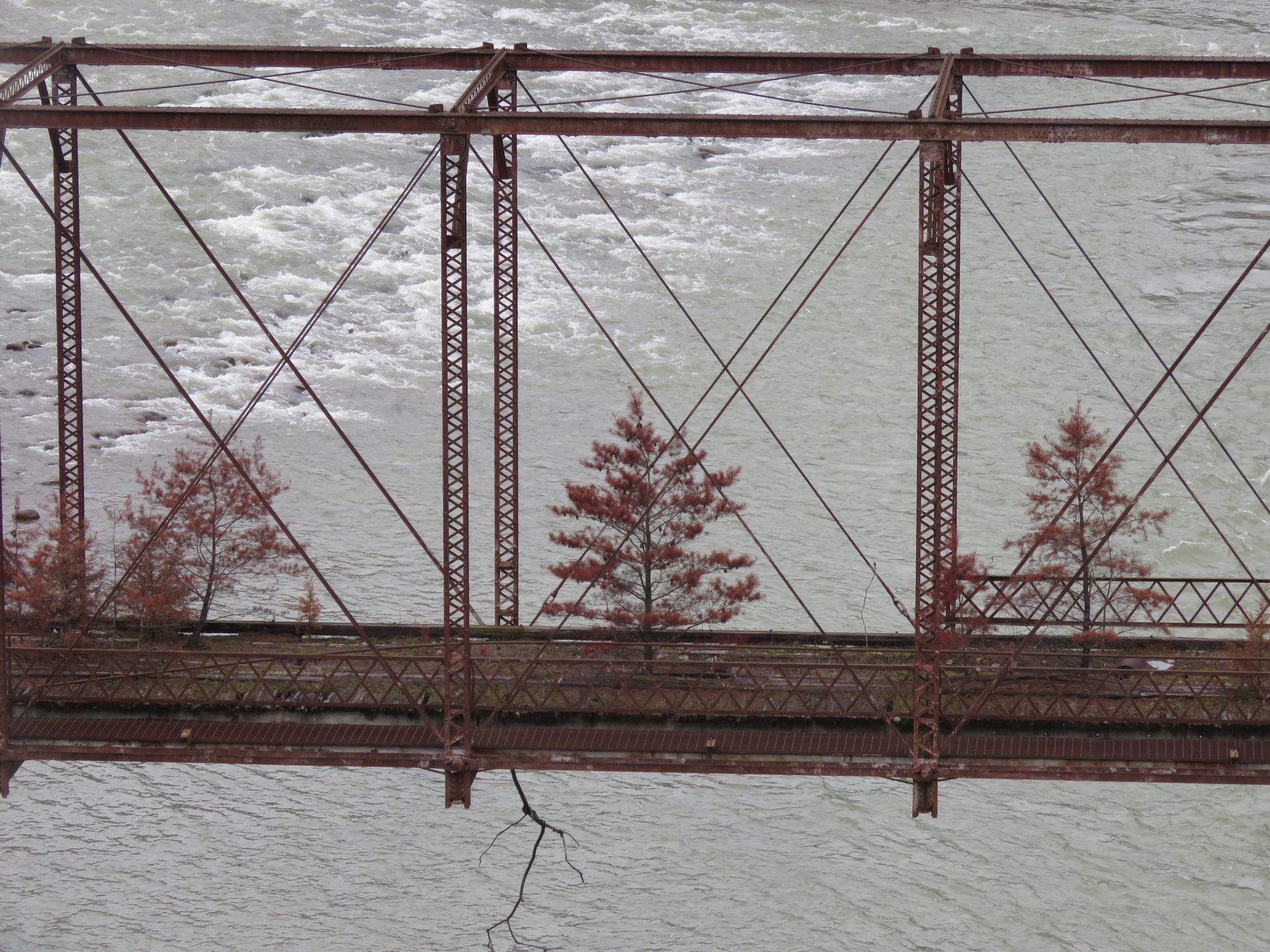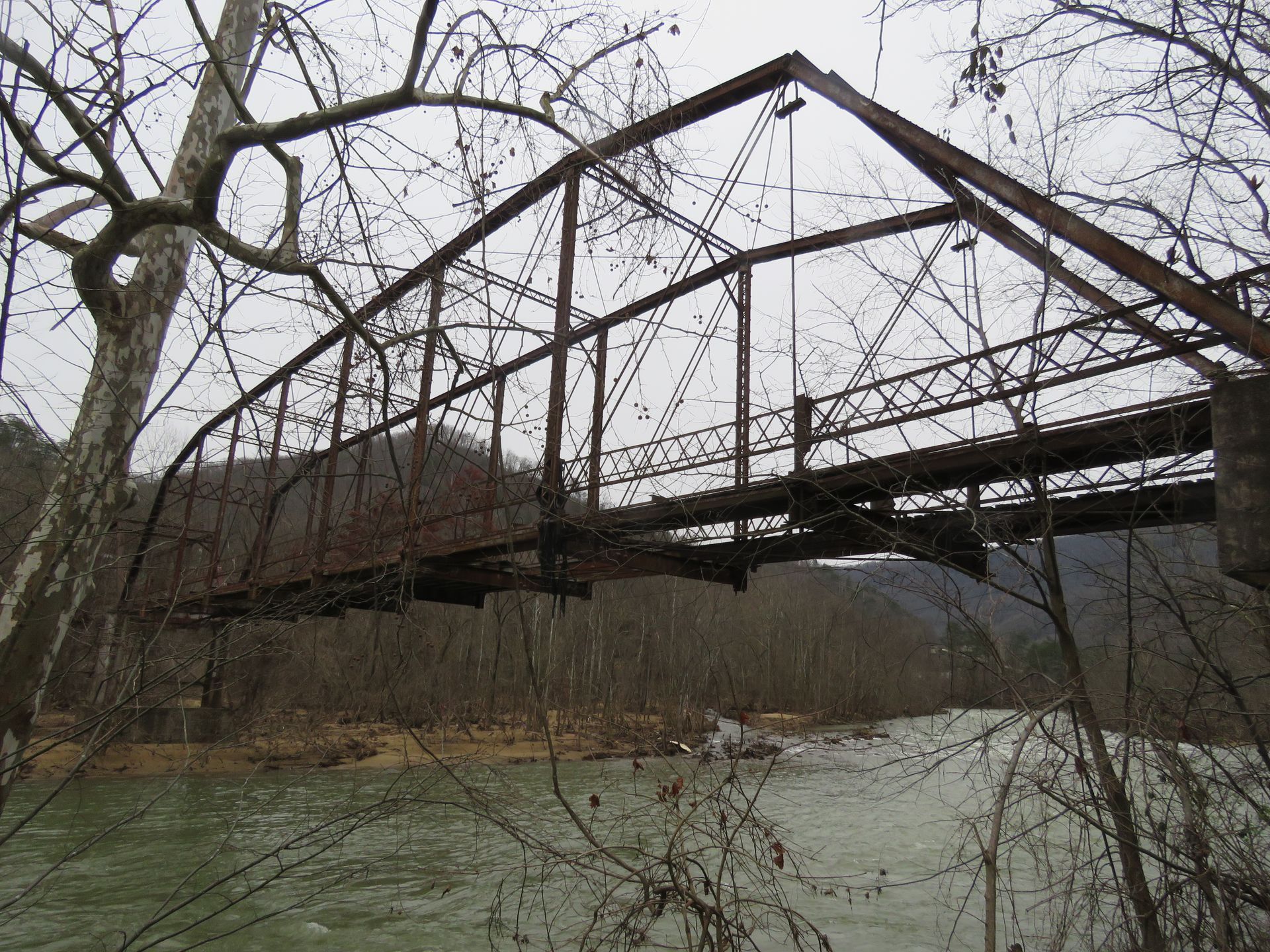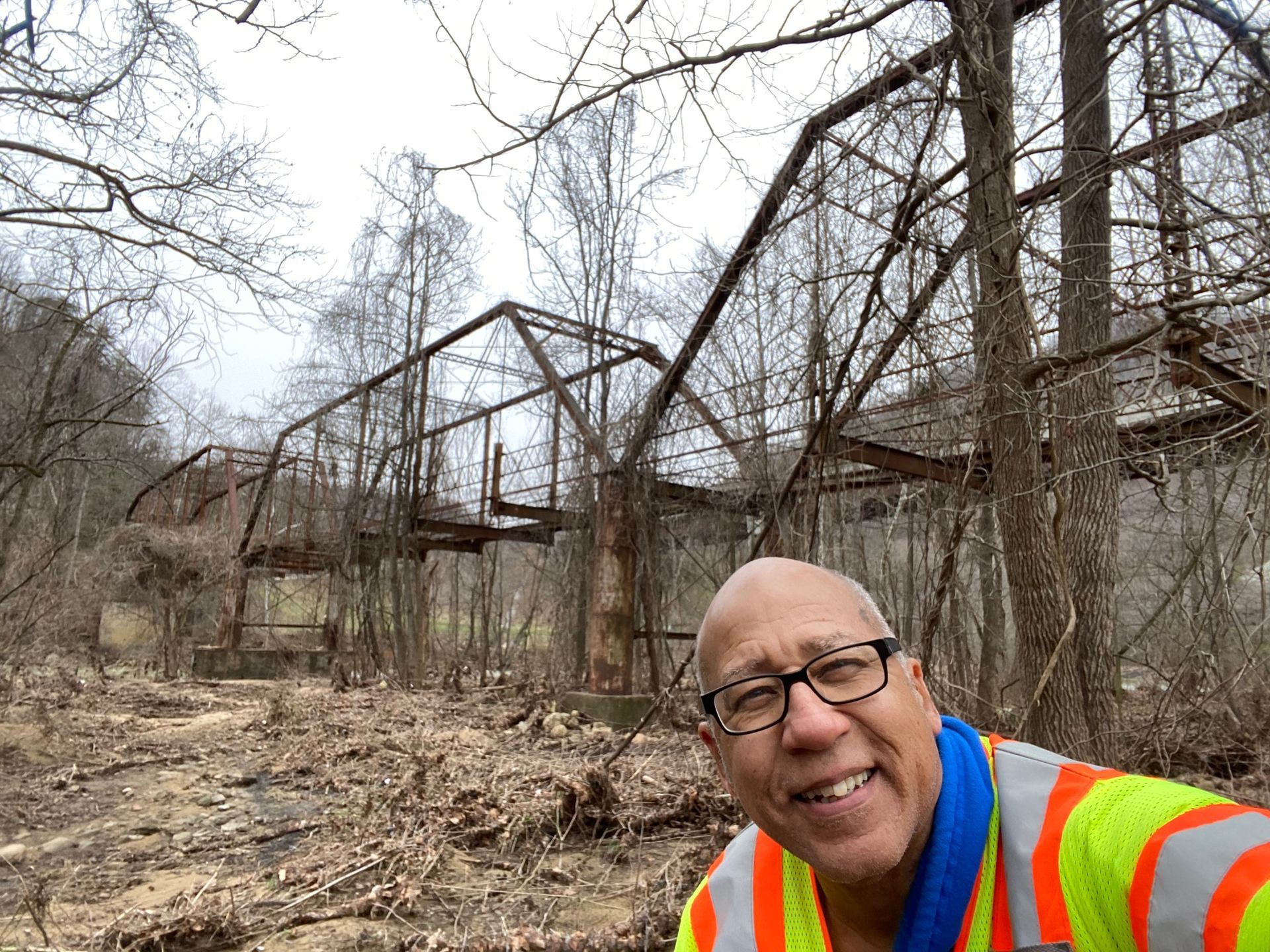BUILDING
BRIDGES
THE IRON AND CONCRETE WINGS OF AMERICA
East and West Bridges, Elkhorn City, KY
Two Identical Bridges on Either Side of a Bend in the River
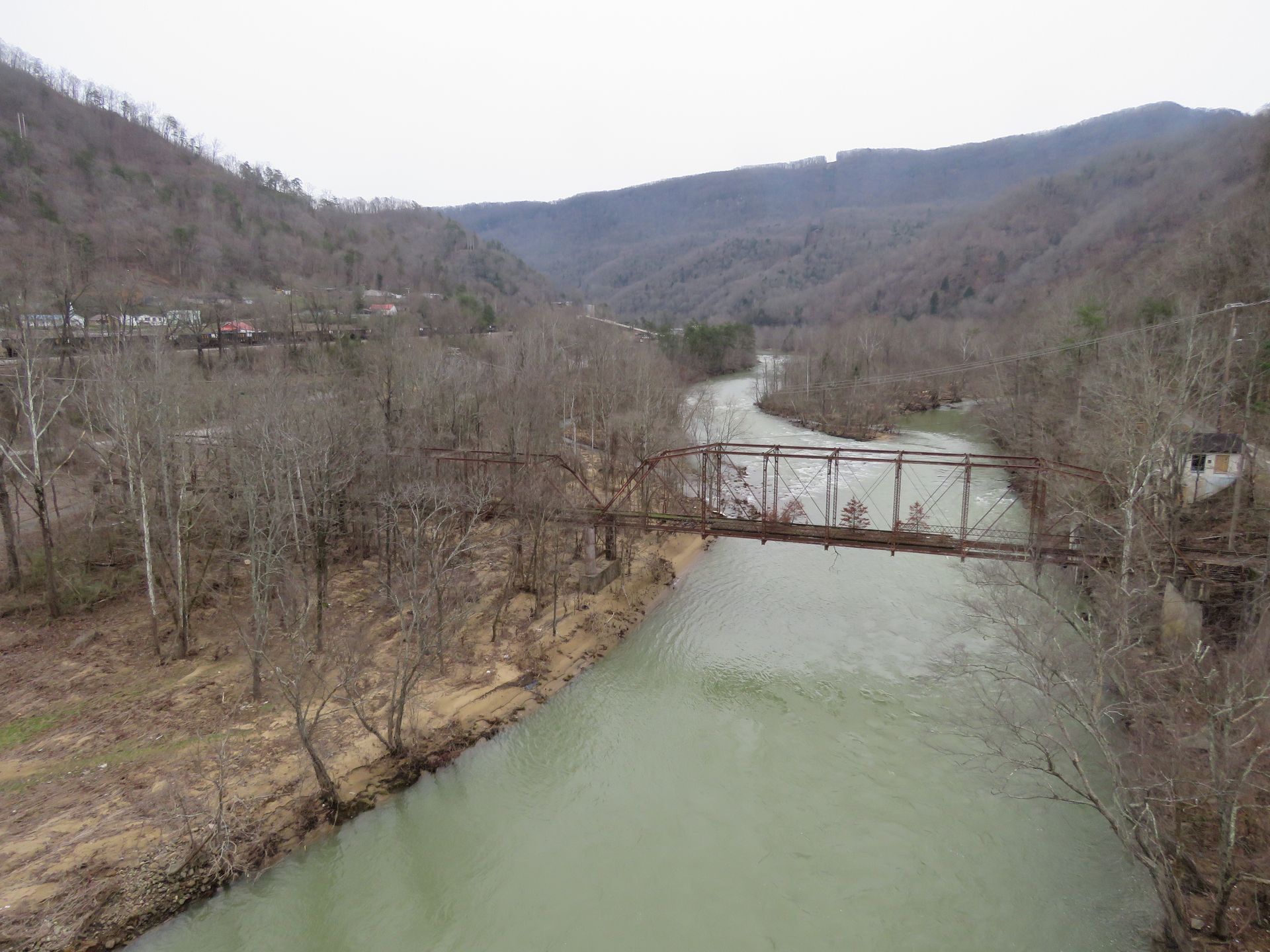
1912 was an important year for about a hundred people living in a bend of the Russell Fork of the Big Sandy River Levisa Fork, near the southeastern border that Kentucky shares with Virginia.
That year, residents in the bend would incorporate themselves as the city of Elkhorn City, Kentucky. Also that same year, two major railroads, the Chesapeake & Ohio from the north and the Carolina, Clinchfield and Ohio from the south through the "breaks" would meet together for the first time. The result would bridge the transportation of commodities between the Midwest and important ports along the Atlantic coast.
And in 1912, another local transportation step forward was taken in Elkhorn City when two separate, one-lane steel truss bridges were built in the new community, spanning the Russell Fork on either side of the rapidly growing town. Both bridges would later become part of major east-west Kentucky State Route 80. They replaced dangerous fords in their locations and although abandoned, both bridges amazingly still stand today, more than 110 years later.
The bridge on the west side of town consists of an eight panel, pin-connected Pratt camelback through truss channel span at 152 feet long, along with two seven-panel, pin-connected Pratt through truss approach spans, for a total bridge length of about 325 feet. According to Larry Lounsberry, manager of the nearby Elkhorn City Railroad Museum, the bridge that was originally built by the Champion Bridge Company of Wilmington, Ohio was recycled by the Chesapeake & Ohio Railroad from its original location at Catlettsburg, Kentucky over the Big Sandy River, to be used as a highway bridge at its present location upriver at Elkhorn City. Although the deck was removed years ago, the bridge had been converted to a pedestrian walkway, but is now closed to all traffic. Mr. Lounsberry says there is an effort underway to restore that historic function. It was bypassed by a new bridge further downriver in 1950.
On the eastern end of town is an almost identical, but longer steel truss bridge, with one nine-panel Pratt camelback, pin-connected span over the river channel at about 176 feet long, and two pin-connected Pratt through truss approach spans. The total bridge length at this crossing is about 390 feet. No manufacturing plate is available on the east bridge, but it's believed that the Champion Bridge Company also built that one because of its similarities to the west bridge. A new crossing, the "Kelver and 'Bumper Jack' Stiltner Bridge was completed just downstream in 2015.
The East bridge would indeed be noteworthy if indeed built by Champion, because it would be one of the largest and longest surviving examples lengthwise of a pin-connected bridge from that company from the late 1800's to the early 1900's.
Although not a builder of bridges anymore, the Champion Bridge Company is now in the iron and steel fabrication business today, but a number of its early bridges are on the National Register of Historic Places.
